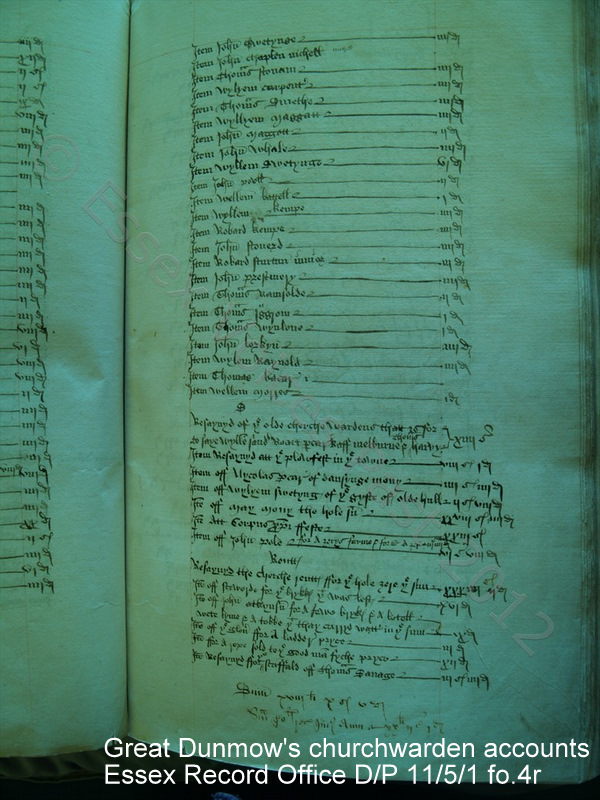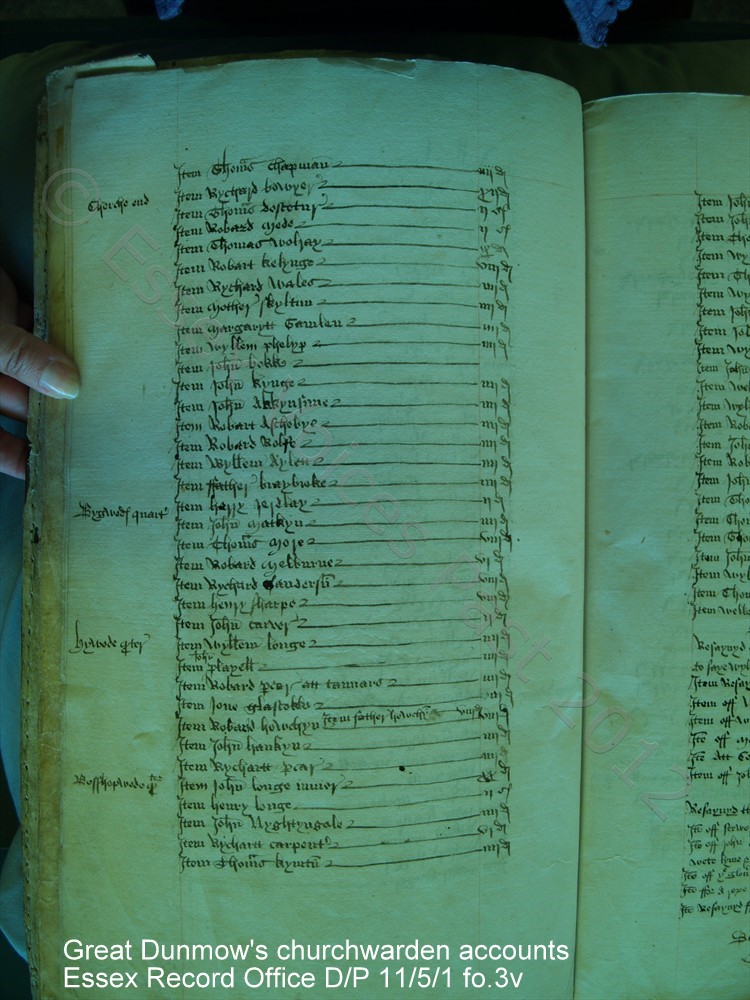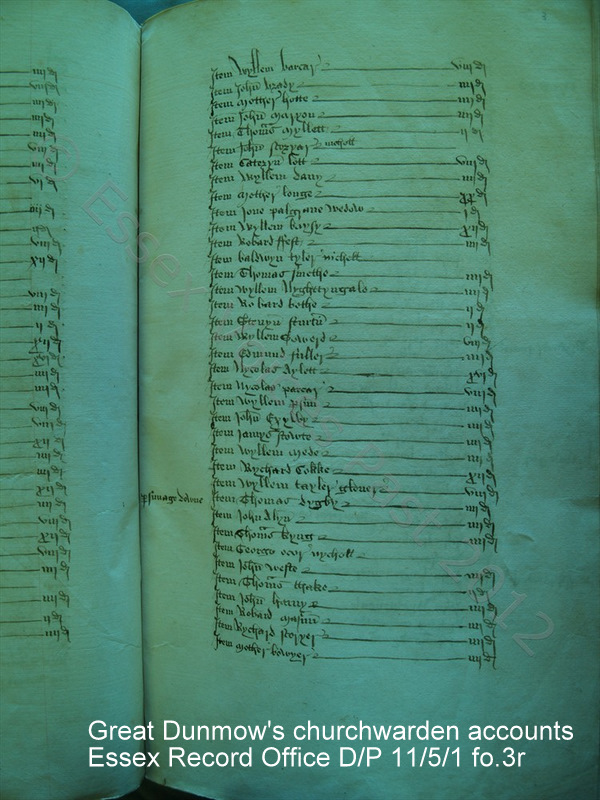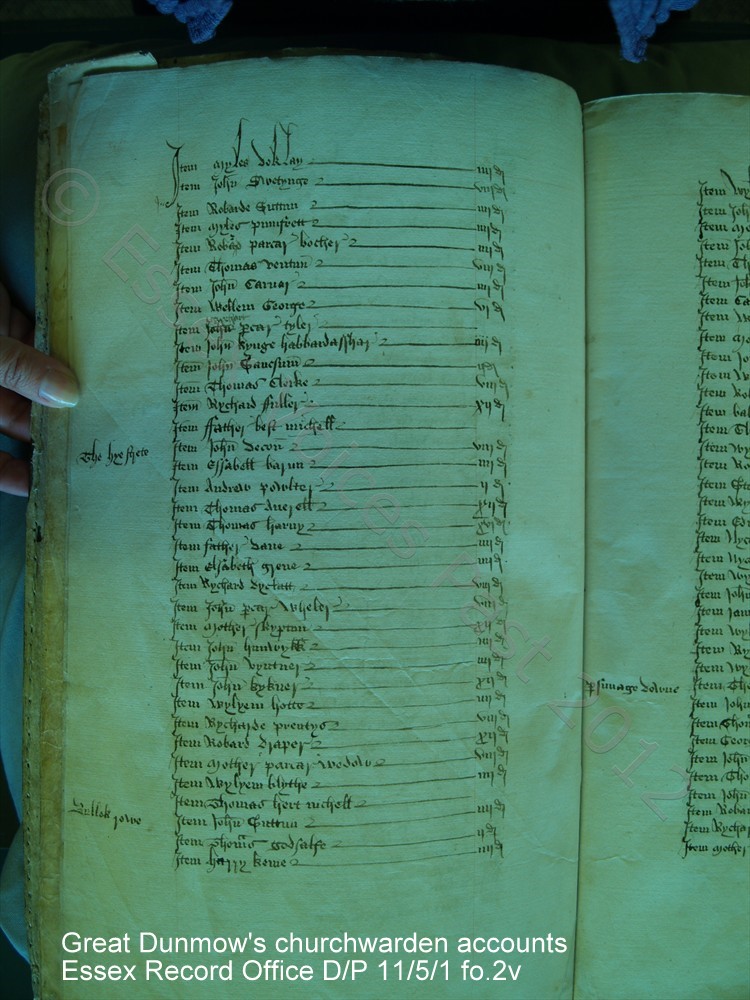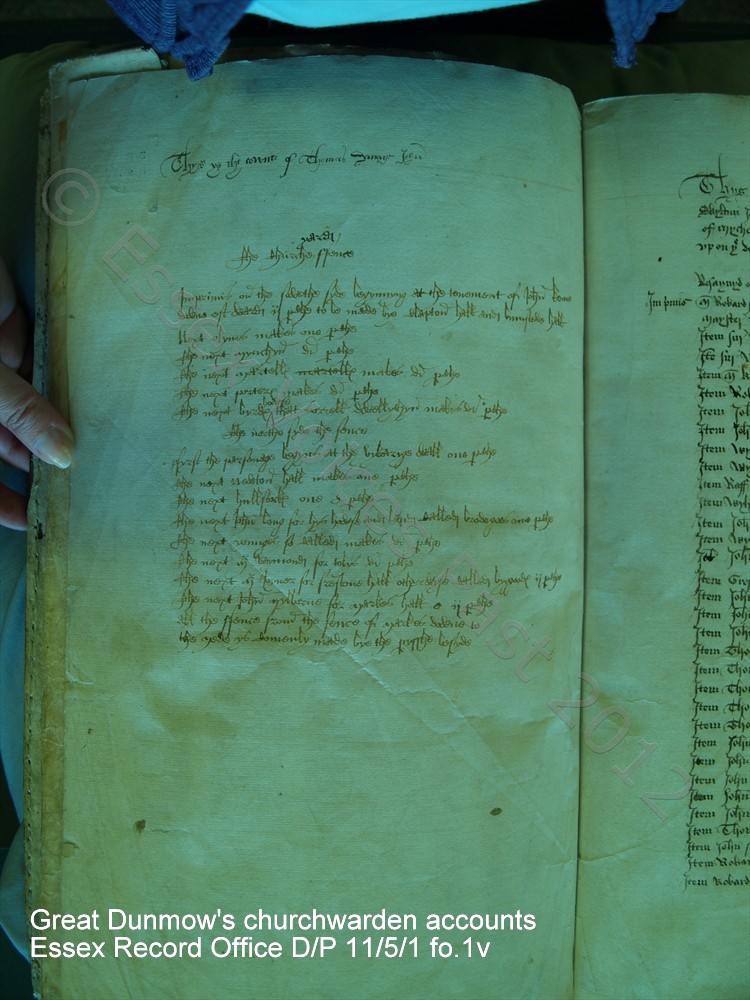Great Dunmow’s local history: Tudor parish’s administration
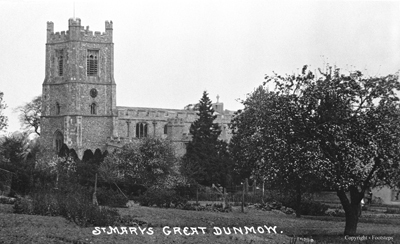
The entries detailing the collection for Great Dunmow’s church steeple are a fascinating window into the lives of our ancestors of 500 years ago. This is not only because of the names that are listed but also because the collection gives an amazing opportunity to analyse the administration of a small parish in late medieval/early Tudor England. The next few blog posts will unpick some of that administration and show how innovative, thorough and diligent our ancestors of 500 years ago were in the management their finances.
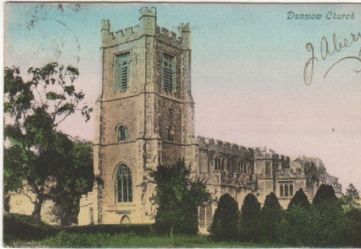
The collection was written into the accounts on ‘ye dedicacion day the yere of owre lorde god mcccccxxvi’ [Dedication day, 1526]. The parish church was (is) dedicated to St Mary the Virgin who had several saints days in Catholic Tudor England, so this date could have been one of several days including her two major feasts; the Annunciation (25 March) and the Assumption (15 August). However, this was not the date that the collection took place but just the date the contributions were formally written into the account-book. The collection must have taken place over a period of time previous to this – perhaps as long as a year. So the true dating of the collection for the parish steeple was 1525-6. It may seem pedantic to clarify the date to such a fine level. However, Great Dunmow’s churchwarden accounts have been examined by many historians over the last hundred years or so and many of these historians have misdated events that happened in the town. Thus some fascinating connections between Great Dunmow and events that occurred elsewhere in Tudor England and Scotland have been totally ignored or misinterpreted. (These events will be discussed in future blogs.)
The church clerk (named in the list as Robert Sturton), and the churchwardens took great care in documenting each contribution to the church steeple. Maybe at the end of each church service, the clerk set up a table near the church’s exit and collected each parishioners contribution and recorded their contribution in rough within notebooks or on scraps of paper as the parishioners left the church. Those rough scraps would later have been collated into the list that we see today. This list, as entered into the account-book has been written in strict social-hierarchy order of the parishioners: named first are parish clergy, followed by the elite, and then everyone else (as shown in the table below).
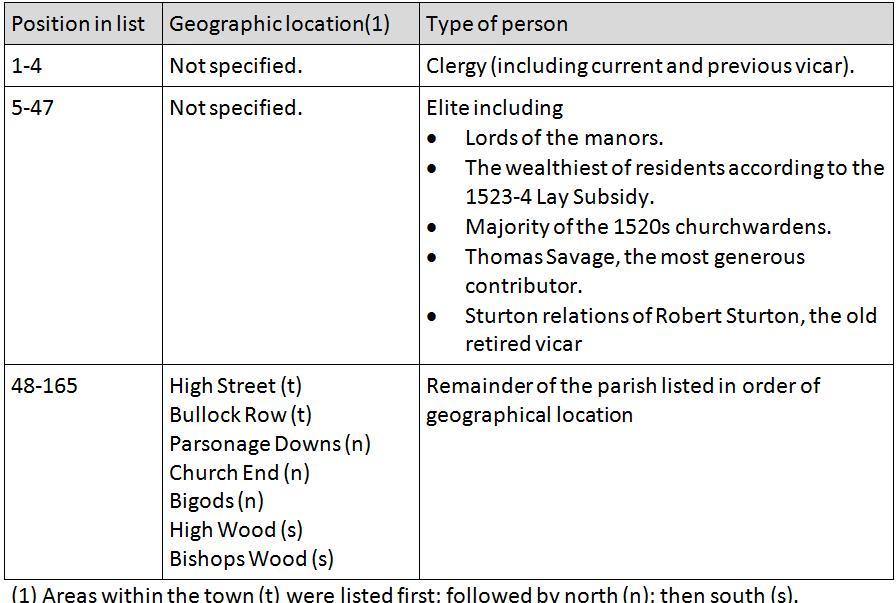
Postcards displayed on this page in the personal collection of The Narrator.
Notes about Great Dunmow’s churchwarden accounts
Great Dunmow’s original churchwardens’ accounts (1526-1621) are kept in Essex Record Office (E.R.O.), Chelmsford, Essex, D/P 11/5/1. All digital images of the accounts within this blog appear by courtesy of Essex Record Office and may not be reproduced. Examining these records from this Essex parish gives the modern reader a remarkable view into the lives and times of some of Henry VIII’s subjects and provides an interpretation into the local history of Tudor Great Dunmow.
*-*-*-*-*-*-*-*-*-*-*-*-*-*-*-*-*
This blog
If you want to read more from my blog, please do subscribe either by using the Subscribe via Email button top right of my blog, or the button at the very bottom. If you’ve enjoyed reading this post, then please do Like it with the Facebook button and/or leave a comment below.
Thank you for reading this post.
You may also be interested in the following
– Index to each folio in Great Dunmow’s churchwardens’ accounts
– Great Dunmow’s Churchwardens’ accounts: transcripts 1526-1621
– Tudor local history
– Pre-Reformation English church clergy
– Building a medieval church steeple
© Essex Voices Past 2012-2013.



